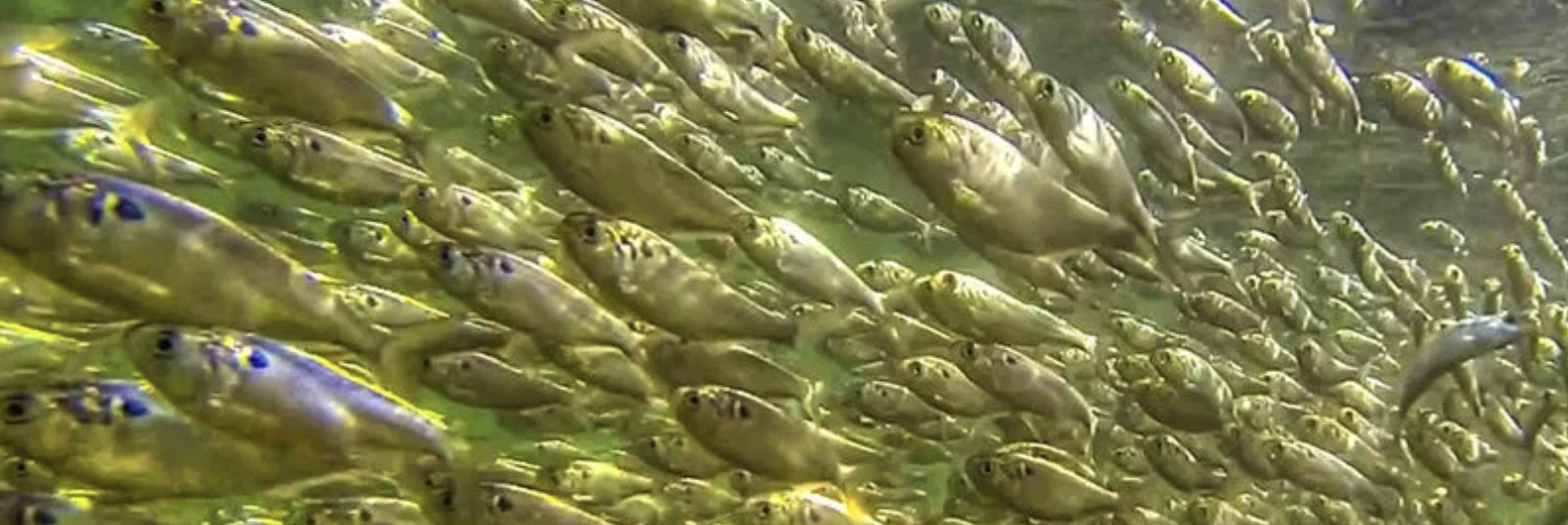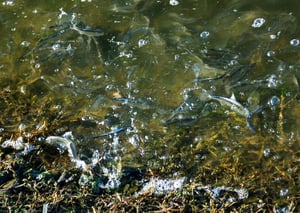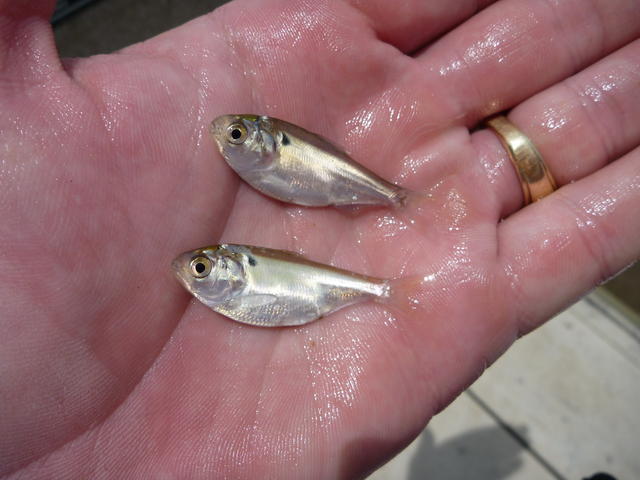Generally speaking, Shad are a great forage species for Largemouth Bass, but they aren't ideal for every fishery.
Should You Stock Your Fishery with Shad?

As with so many things related to pond management, the answer to that question is it depends.
Before we can give you a better answer to that question, there are several factors we need to know and consider.
Factors such as the size of your pond, its clarity level, the availability of habitat in the top 5 feet of the water column, what other species are in the pond, and how big are those other fish.
Then we can help you decide if you should stock Shad, and, if so, which species; Gizzard or Threadfin. Each has its benefits and should be appropriately stocked in order for your pond to truly benefit!
What's the Ideal Pond Size for Shad?
While there isn't a hard and fast rule about how big your fishery has to be, in most circumstances, we find it is hard to establish a sustainable broodstock of Shad in a body of water smaller than 5 acres and that typically they do better in a much larger body of water.
Shad are pelagic, meaning they school in open water, prolific consumers of phytoplankton (microscopic one-cell plants) and zooplankton (microscopic animals), and highly fecund.
Drawbacks for Shad in Small Ponds
Despite their small size (the average adult Threadfin will only reach 5 inches), in smaller ponds, they can create excessive competition for resources with juvenile game fish and adult bait fish - like Bluegill.
Is Your Pond Too Clear for Shad?
Because Shad are pelagic, they spend most of their time schooling in the top five feet of the water column. If your pond is too clear, they are exposed to threats from predation.
Additionally, since Shad are filter feeders it is important to maintain a healthy plankton bloom throughout the growing season to support and sustain a threadfin shad population.
Do You Have the Right Habitat for Shad?
Threadfin and Gizzard Shad spend their time in open water.
In fact, it is their offshore schooling that creates such an exciting topwater fishing experience. Bass typically lie in wait for their prey, which they generally hunt as individuals. However, the schooling behavior of Shad causes the Bass to modify their feeding habits, consuming several of the small forage fish with each bite.
Without sufficient habitat, such as the Honey Hole Tree, stocking Shad supplementally to your fishery might be a great way to add variety for your Bass, but you'll have a hard time establishing a broodstock.
Currently Stocked Fish Species and Size
Understanding the established fish population in your fishery is another key component in deciding to stock Shad or not.
As we've already discussed, because of their prolific nature, Shad can create competition for resources with juvenile game fish and adult bait fish. You need to have the right ratio of prey to predator to insure the Shad don't impede the recruitment of juvenile bass to your trophy-class population.
Understanding the overall health of your Bass population will help determine if you have too many, or too few Bass to justify the supplemental stocking of Shad.
Additionally, unless you have a significant population of big bass, we almost never recommend stocking Gizzard Shad. They can grow to 8 inches, making them just too big for the "average" largemouth, causing even more competition for resources with your broodstock Bluegill.
The Issues with Stocking Shad

In a lot of ways, Threadfin Shad are the perfect forage fish if you're trying to raise trophy-class bass. Even as adults, Threadfins are the ideal size for most Bass. They are prolific breeders and their schooling nature creates great excellent opportunities for fattening your Bass and for fishing.
But, there are a few issues associated with stocking Shad.
- First, they are more delicate than the other forage species you could stock and they don't always do well with transportation.
- Second, they are temperature sensitive, and, depending on the depth of your pond and the available habitat, they may not winter well.
- Third, it isn't hard to mistake juvenile Gizzard Shad for Threadfin so you could very easily end up with the wrong species.
While there isn't much you can do about the sensitivity to temperature, you can mitigate the other issues by only getting your Shad from a very reputable supplier. But because these fish are challenging to stock, there are usually minimum order requirements and short delivery notice for these fish.
Pond King Can Help You with Your Pond’s Forage Base Management
If you have any questions on stocking your pond or the fish we have available, stop by and see us at our office in Gainesville, Texas or contact us today. Our fisheries biologists are ready to serve you!




